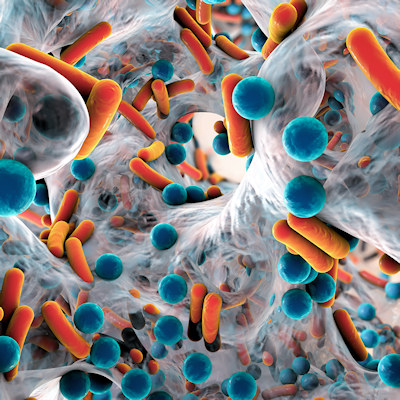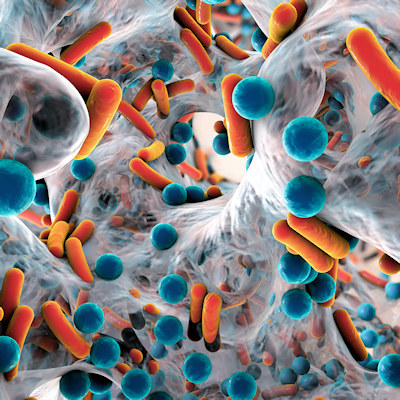June 2, 2023 -- Single-particle cryo-electron microscopy (cryo-EM) has visualized a key step in the production of proteins by bacteria, generating insights that could inform the development of new antibiotics.
The need to quickly expand the arsenal of antibiotics to overcome the emergence of multidrug-resistant bacteria has led to increased interest in riboswitches. Discovered in 2002, riboswitches are small pieces of RNA that are involved in the regulation of protein production. The pieces of RNA are mostly found in bacteria, suggesting drugs could target them to disrupt a pathogenic process without harming humans.
A lack of knowledge of exactly how riboswitches work is one barrier to the development of antibiotics that target RNA. To address that knowledge gap, researchers at the University of Michigan applied a mix of biochemistry, structural biology, and computational modeling to understand a riboswitch.
The study, details of which were published in Nature Structural & Molecular Biology, looked at the preQ1 riboswitch. RNA polymerase (RNAP) copies genetic information from the DNA into a strand of RNA. As it does so, it pauses several times, only resuming when it receives new instructions from the cell. The pausing and resumption process is a potential target for drug developers.
Earlier research revealed that the riboswitch is involved in the pausing and resumption of its own transcription but was unable to explain the mechanism by which riboswitch folding modulates pausing. The researchers knew ligand binding to the riboswitch induces RNAP pause release. The challenge was to find a way to visualize the binding, as Adrien Chauvier, a co-author of the paper, explained.
"This is a David versus Goliath situation. RNAP is this giant Goliath and the riboswitch is David. Because of this drastic size difference, visualizing where and how preQ1 regulates transcriptional pausing is equal to finding a needle in a haystack," Chauvier, a postdoctoral fellow at the University of Michigan, said in a statement.
Chauvier and his collaborators used single-particle cryo-EM to reconstruct the state of the riboswitch when bound to and free from its ligand. The work revealed that the binding of the ligand causes the riboswitch to rotate around its helical axis. As the riboswitch rotates, it expands the surrounding RNAP exit channel and repositions the transcript for elongation.
The change in the shape triggered by ligand binding allows the RNAP to continue moving along the DNA and thereby restarts the transcription process. The work has created 3D models that give a more precise picture of how the riboswitch regulates its own transcription.
Copyright © 2023 scienceboard.net









